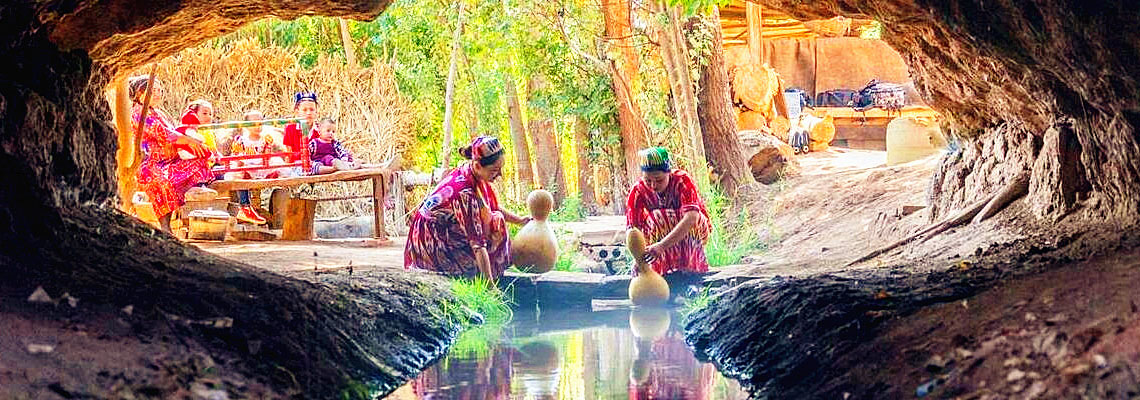
Day 1
Urumqi-
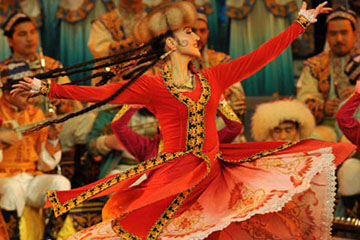
- Erdaoqiao Market & International Bazaar
We will meet you at the airport, transfer you to the hotel and check you in. Then we will head out to visit the Xinjiang Museum and Xinjiang International Bazaar.
Xinjiang Museum: The Xinjiang Regional Museum is a large integrated museum and a centre for the collection and study of cultural relics in Xinjiang. The museum was built in 1953, featuring Uighur ethnic internal decor style and has an exhibition hall covering an area of about 7,800 square meters. There are more than 50,000 pieces of various kinds of cultural relics stored in the museum, among them are the ancient mummies represented by the “Loulan Beauty”, manuscripts in Chinese, Karosthi, Qiuci, Yanji, Tibetan, Uighurian and other characters prevailing in ancient western regions of China, as well as silk, wool, cotton and hemp fabrics and folk raiment, etc., all items of great intrigue. The 'Loulan beauty' mummy in particular is a well preserved mummy from 4000 years ago. It still has a reddish brown skin, thick eyelashes, charming large eyes, and long hair.
Erdaoqiao & International Bazaar: Here you will find a bustling market filled with fruits, clothing, crafts, knives, carpets, and almost anything that you can imagine. This is the largest bazaar in Urumqi, and is a place most welcomed by tourists, especially the ladies who will find they can buy some traditional Yugur cosmetics. On Sunday, there are more stalls and more goods to buy than any other day. The old streets around the bazaar are particularly worth seeing.
Day 2
Urumqi-
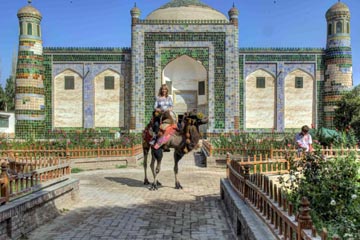
- Apak Hoja Tomb
After breakfast you will take the flight to Kashgar and take the city tour. We will visit the Apak Hoja Tomb, Id Kah Mosque and Old Town.
Id Kah Mosque: This is the largest mosque in China, and the most famous mosque in Xinjiang. The construction of the mosque started in the middle of the 15th century, and the mosque has gradually developed to its present size. The buildings of Id Kah Mosque look magnificent and solemn, and display the artistic styles of Islamic mosque architecture. The Mosque has an area of about 16,800 square meters, consisting of the Pray Hall, the Koran teaching Hall, the Corridor, the Arches and other buildings attaching to it. The Pray Hall of the mosque, which can hold 4,000 prayers, is supported by 140 carved wooden pillars.
Apakh Hoja Tomb: This Mazar is the holiest place in Xinjiang for the Muslims, and an architectural treasure. Built in 1640, it is reminiscent of the Central Asian artistic style of Samarkand or Isfahan. The site is also known as the Xiang Fei (Fragrant Concubine) Tomb in memory of Abakh Khoja's granddaughter, Iparhan, who was the Fragrant Concubine of Emperor Qianlong of Qing Dynasty. A handsome blue-and-white tiled gate leads into the compound, which includes a small religious school and the Abakh Khoja family tomb. The latter is domed and faced with muti-color tiles. It is the most complete Islamic tomb dating from the beginning of the Qing Dynasty.
Old Town: Kashgar is an ancient city, and in walking the streets of its Old Town, one gets the sense of what this legendary Central Asian hub was like in the days when the Silk Road was at its zenith. 500-year old remnants of the city wall, narrow lanes and colorful multi-ethnic crowds combine to make Kashgar’s historic district a highlight of any visit to the city. Visit the small alleys to look at the characteristic Uygur residences. You will experience and enjoy the culture and history that has been retained in the small alleys and deep courtyards. In the alleys on platforms beside the residence you could marvel at the even more ancient primitive workshops for hand-made earthenware. Some 17 or 18 antique workshops have been restored.
Day 3
Kashgar-
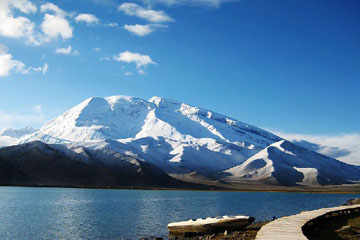
- Karakul Lake
After breakfast we will drive on the China and Pakistan highway, known as the Karakorum Highway, to visit the Karakul Lake.
Karakorum Highway: The Karakorum Highway, or China-Pakistan Friendship Highway, is more than 1200 km long. It was opened to the public in 1979. Due to its high elevation (more than 4700m at its highest point) and the difficult conditions in which it was constructed, it is often called the 8th Wonder of the World. The Karakorum Highway traces one of the ancient Silk Roads. The Silk Road merchants then had to climb through the Wakhan Corridor, north of the high mountains of Karakorum and Hindu Kush, to get to India, Pakistan and onward to Iran. While you are on the Karakorum Highway, you can enjoy the scenery of Mt. Muztagh, and Taxkorgan, which in Persian language means stone castle. The brave Tajiks people had lived their nomadic life in Taxkorgan on the Pamir Plateau for more than 2000 years.
Karakul Lake: At an altitude of 3600m, this is the highest lake of the Pamir plateau, near the junction of the Pamir, Tianshan (Heavenly Mountain), and Kunlun Mountain ranges. Surrounded by mountains which remain snow-covered throughout the year, the three highest peaks visible from the lake are the Muztag Ata (7546m), Konur Tagh (7649m) and Kongur Tiube (7530m). The lake is popular among travelers for its beautiful scenery and the clarity of its reflection in the water, whose color ranges from a dark green to azure and light blue. There are two Kirgiz settlements along the shore of Karakul Lake, a number of yurts about 1 km east of the bus drop-off point and a village with stone houses located on the western shores.
Day 4
Kashgar-
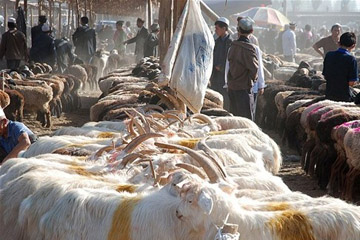
- Sunday bazaar
After breakfast we will visit the Sunday bazaar and in the afternoon you will take the flight back to Urumqi.
Sunday Bazaar: This is called “Sunday” bazaar but it is open daily, even though it is busiest on Sundays. Streets near this big market are jammed with farmers and buyers arriving by donkey cart, truck, bicycle, horseback, ute, motobike, or on foot, with their animals. It is loud, lively and cheerful as they arrive, eat breakfast, set up their animals and check out the action. Cattle, sheep (they definitely look different), goats, donkeys, horses have their own sections. Sellers show off their animals as “good eaters” (most go as livestock, not meat). The entire experience is fascinating and fun.
Day 5
Urumqi-
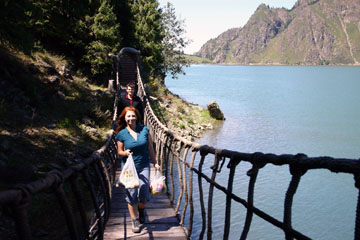
- Heavenly Lake
After breakfast we will visit the Heavenly Lake and then head to Turpan, and check into the hotel upon arrival.
Heavenly Lake: High up in the Heavenly Mountain, or Tianshan, the Heavenly Lake is a long and narrow gourd-shaped moraine lake, 3400 meters long, about 1500 meters wide, 105 meters at the deepest point, with an average depth of 40 meters, covering an area of about 5.9 square kilometers. There are eight beautiful scenic spots in the lake area. These are “A Ray of Stone Gate”, “Dragon's Pool and Green Moon”, “Magic Needle for Guarding the See”, “Three Stones Bearing the Sky”, “the Snowcapped Southern Mountain”, “Pine Billows in Western Mountain”, “the Hanging Waterfall”, and the “Sea Peak's Sunrise”.
Day 6
Turpan-
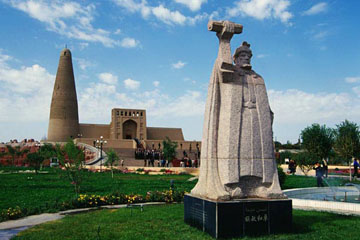
- Sugong Minerat
In the morning we will visit the Jiaohe ruins, Karez Irrigation System, Sugong Minaret, Tuyoq Valley and the Flaming Mountain, and then have lunch at the home of a local family with a vineyard. After dinner we will send you to the station to take the train to Dunhuang.
Jiaohe Ancient City Ruins: The city's name means 'River City'. It was founded during the first century BC and abandoned during the 15th century. It is located atop a steep cliff on a leaf-shaped plateau between two deep river valleys in the Yarnaz valley 10 km to the west of Turpan City. It runs northwest to southeast, 1760 meters long and 300 meters across at the widest part. The ruins include city gates, streets and lanes, government office, temples, domestic houses, cave houses, wells, and an underground temple. It is part of the UNESCO World Heritage Silk Road Sites.
Karez Irrigation System: The ancient Karez Irrigation System, which is still used today, is a unique irrigation system in Turpan. It takes advantage of the slopes, draws the underground water to flow by itself to irrigate farmland. It consists of four parts: vertical wells, underground channels, ground canals, and small reservoirs.
Sugong Minaret: Located in Mura Village 2km to the east of the city of Turpan, the minaret tower was built in the 41st year of the long reign of Qianlong Emperor during the Qing Dynasty. It is the embodiment of the ancient architectural arts of the Uighur people. The body of the tower is cylindroid in shape, built with bricks arranged in various symmetrical patterns on the outer wall. The tower has 14 windows and a spiral staircase inside going to the top.
Tuyoq Valley: This is a 12 km long primitive Uighur agricultural valley about 70 km from Turpan, with vineyards and fields in the northern and southern valleys and a narrow ravine that connects them. It is a Muslim religious pilgrimage site. The southern mouth of the valley has big Uighur mosques older than the Sugong Minaret and a cave thought by many to be described in the Koran. About a kilometer from the cave shrine is a group of grottoes that have some Buddhist and Nestorian artwork. These grottoes are said to date from the West Jin Dynasty (265AD-316AD), and are considered to be the earliest in Turpan. Most of the murals are damaged. Fortunately, 10 of the grottoes still have some of the preserved murals. These precious murals are very unique in style.
The Flaming Mountain: The Flaming Mountain is famously described in the classic Chinese mythological novel “Journey to the West”. It runs west from Shanshan County, is 98 km in length and 9 km across, with a relative height of 500 meters and the highest peak at 832 meters. The mountain is a branch range of the Bogda Mountain, formed in the orogenic movements of the Himalayas. This is the hottest place in China. The highest air temperature in summer is 47.8 degrees Centigrade, and the ground is over 70 degrees Centigrade in summer. Many years of volcanic activity have formed the unique crisscrossing gullies and ravines. During mid-afternoon the heat becomes intense as the sun's rays are reflected off the red rocks, as though the hillsides are engulfed by tongues of fire, hence the name.
Day 6
Turpan-
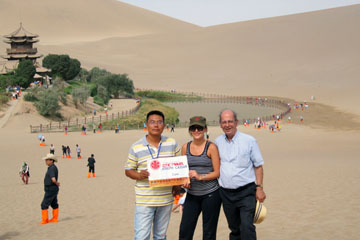
- Crescent Lake
We will visit the famous Mogao Grottoes, Echoing-Sand Mountain and Crescent Lake upon arrival in Dunhuang.
Mogao Grottoes: The Mogao Grottoes, a shrine of Buddhist art treasures, is 25 km from downtown Dunhuang on the eastern slope of Mingsha Shan (Echoing Sand Mountain). A network of plank-reinforced roads plying north to south 1600 meters long lead to the cave openings, which are stacked five stories high, some reaching up to 50 meters. Incidentally, Mogao means high up in the desert. According to Tang Dynasty records, a monk had witnessed onsite a vision of thousand Buddhas under showers of golden rays. Thus inspired, he started the caves construction work that spanned a millennium, from the 4th to the 14th centuries. What remains today is truly awe inspiring, and is likely the world’s richest treasure house of Buddhist sutras, murals and sculptures. Please note that cameras are not allowed inside the grottoes.
Echoing-Sand Mountain and Crescent Lake: Together with the Crescent Spring and the Mogao Caves, the Echoing-Sand Mountain is the most popular tourist site in Dunhuang. Echoing-Sand Mountain, known as Mingsha Mountain to the Chinese, is 5 km to the south of Dunhuang and is famous for the constant sound of the moving sand. Legend has it that many years ago a horrific battle was fought here, and the sounds we hear today were the haunting cries of soldiers buried in the sand dunes. Situated within the Echoing-Sand Mountain Park, the Crescent Moon Lake is literally an oasis in the desert. The lake’s name derives from the crescent moon shape taken by the pool of spring water between two large sand dunes. Although the surrounding area is very dry, the pool surprisingly doesn’t dry up as one might expect.
Day 8
Dunhuang-
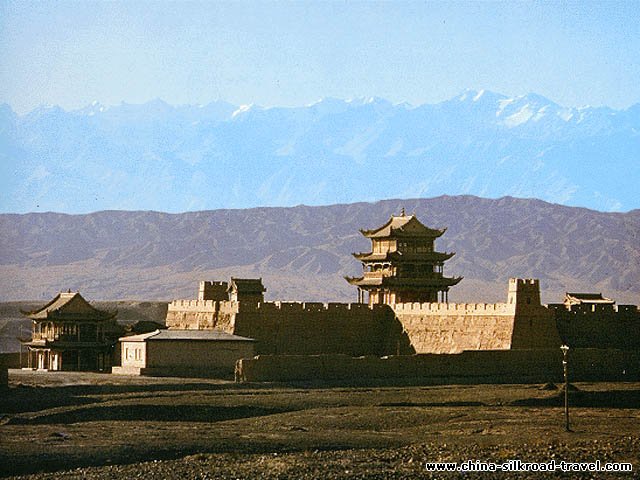
- the Jiayuguan Pass
In the morning we will drive to Jiayuguan and visit the Jiayuguan Pass, Great Wall on the Cliff, Great Wall Museum. After that we will send you to the airport to take an evening flight to Lanzhou. We will meet you at the Lanzhou airport, transfer you to the hotel and check you in.
Jiayuguan Pass: Jiayuguan Pass stands in the southwest part of Jiayuguan City, about 6 km away from downtown. The Ming Dynasty fort here guards the strategic pass, at the western end of the Great Wall – this was the last section built by the Ming Dynasty. Construction of the fort was started in 1372 in the Ming Dynasty, and subsequently enlarged and strengthened, and was known as 'the strongest pass under heaven'. It is located in the Jiayu Highland, hence its name Jiayuguan. It is situated between the Wenshu and Heishan Mountains at the foot of Jiayuguan Hill of the Qilian Mountain range.
The Great Wall on the Cliff: The Suspended Wall is a part of the Great Wall of China. The wall here was built on the ridge with a gradient of 45 degrees. It is high in the air and it looks as if it fell down from the top of the hill. So people refer to this section of the Great Wall as the "Suspended Wall". The Suspended Wall, the extension of the walls at the Jiayuguan Pass towards the north, was an integral part of the ancient defense system at the Jiayuguan Pass.
Great Wall Museum: The Great Wall museum opened to visitors in October 1989, and it is the first museum to exhibit the Great Wall culture in a comprehensive and systematic way. The Museum covers an area of 12,312 square meters with an exhibition area of about 1,766 square meters. Its main building takes a shape of a typical signal fire tower on the Great Wall.
Day 9
LanzhouAfter breakfast we will drive to Xiahe, taking in the views on the way.
Day 10
Lanzhou-
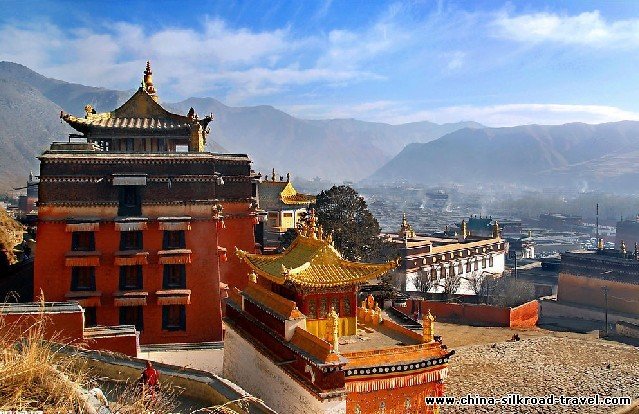
- Labrang Monastery
In the morning we will visit the Labrang Monastery and Songke grassland, and then return to Lanzhou to take the flight to Lijiang
Labrang Monastery: The Labrang Monastery is located at the foot of the Phoenix Mountain, northwest of Xiahe County in Gannan Tibetan Nationality Autonomous Prefecture, Gansu Province. As a propitious place in the hearts of the Tibetans, it stands by the Daxia River and faces the Dragon Mountain. A long time ago, this place was a boundless sea, which over time had turned into the present landscape. There is a beautiful legend that tells about how the Dragon Mountain, Phoenix Mountain, and the Daxia River were formed.
Songke Grassland: Lying at an average altitude of over 3,000m above sea level, the Songke Grassland is situated a short 14km from Xiahe. This vast expanse of grassy plains, covering an area of around 70 square kilometers, is a lonely, beautiful place that presents a nice change for those coming from the bustling cities, such as Chengdu or Lanzhou. There are only 4,000 Tibetan nomads left on the grasslands, and they graze yak herds and offer tourists the chance of a ride on their horses. Entertainment here varies according to your preference. Botanists and hikers will be happy to just set off into the rolling hills, but for those after a little more excitement, the horse rides, costing around RMB25, are good fun.
Day 11
Lijiang-
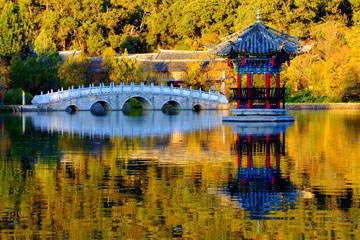
- Black Dragon Pool Park
After breakfast we will visit the Lijiang Old Town, Black Dragon Pool, Baisha Village, Mountain River Show.
Lijiang Old Town: Lijiang Old town is officially called "Dayan Town", "Dayan" literally means a "great ink slab", a graphic description of the town's location on a piece of rich flatland fed by a river and surrounded by green mountains. Dayan Town is the large Naxi settlement first built during the Southern Song Dynasty some eight centuries ago. Dayan Town is one of the few places in China with well-preserved old style folk buildings.
Black Dragon Pool Park: Somewhat idiosyncratically known as Black Dragon Pool, the Jade Spring Park to the north of Lijiang derives its name from the waters which sparkle like jade and are as clear as spring water. The entire park is green with grass and shaded by swaying willow trees. Under the Shuocui Bridge, a waterfall creates a constant roar as it cascades downstream. At the far side of the pool, there are renovated buildings used for art exhibitions, the Moon-Embracing Pavilion with its own white marble bridge across the water, and the Five-Phoenix Temple built during the Ming Dynasty.
Baisha Village: The village, at the foot of the Jade Dragon Snow Mountain, is about 8km to the north of Lijiang Old Town. It is much quieter and here one can experience the Naxi people’s peaceful daily life. Baisha Village used to be a Naxi settlement. Its construction started during the Tang Dynasty (618 - 907) and it became prosperous during the Song (960 - 1279) and Yuan (1271 - 1368) Dynasties. Wandering around the village, one can enjoy the slow lifestyle of the Naxi People and their friendly smiling faces. One can freely enter various courtyards to see the beautiful and man-made tie-dye artwork hanging for sale or drying in the sun. The Baisha Murals cannot be missed. These Murals are representative of Lijiang Murals and their creation took about three hundred years, from the early Ming Dynasty to the Qing Dynasty (1644 - 1911).
Mountain River Show: This stage show premiered in 2002, and has been widely acclaimed by Chinese and foreign tourist. It is known as Chinese Broadway. The show consists of 3 episodes - Water, Mountain, Love. In the water episode, girls from Dai ethnic group celebrate Water Splashing Festival in a Dai village that appears to be in paradise. In the mountain episode, festivals from different minorities are celebrated. In the love episode, one will experience the unique love and marriage culture of the minorities.
Day 12
Lijiang-
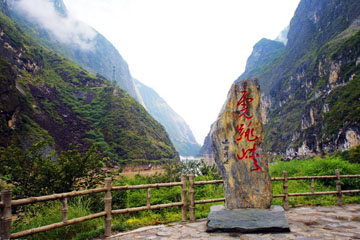
- Tiger Leaping Gorge
After breakfast we will head to the First Bend of Yangtze, Tiger Leaping Gorge, Stone Drum Town, and then to Shangrila.
First Bend of Yangtze River: Starting from the Qinghai-Tibet Plateau, the Yangtze River surges southeastward until it meets the Hengduan Mountain Range. About 44 miles outside of Lijiang the Yangtze is forced to make a sudden V-shaped bend and flow to the northeast. This extraordinary turn creates beautiful and marvelous views that startle the imagination. The whole sight is like a wonderful landscape painting that never ends. This is the First Bend of the Yangtze River, the third longest river in the world.
Stone Drum Town: On the mountain at the river's bend stands Stone Drum (Shigu) Town, named after a drum-shaped marble plaque. Built during the Jiaqing era (1548-1561) of the Ming Dynasty, the stone drum is a monument commemorating the victory of Lijiang's Naxi ruler over an invading Tibetan army. It is 1.5 meter in diameter and 0.5 meter thick. The stone drum has an obvious vestige of what appears to be a "rip" in it. It is said that the stone drum would rupture prior to any war and then fold when peace returned.
Tiger Leaping Gorge: The Tiger Leaping Gorge is on the Jinsha River segment of the upper reaches of the Yangtze and 105 kilometers south of Zhongdian County. It is 17 kilometers long with a drop of 213 meters. The gorge is divided into three sections: Upper, Middle and Lower Hutiao (tiger leaping). At the narrowest spot the river is only 30 meters wide. The mouth of the gorge is 1,800 meters above sea level. The river is flanked by Yulong and Haba snow mountains, with a height difference of 3,900 meters. It is one of the deepest gorges in the world.
Day 13
Shangrila-
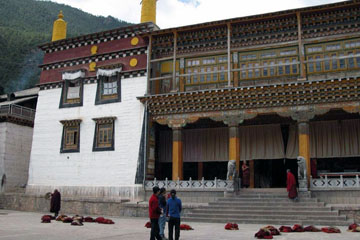
- Dongzhulin Monastery
We will visit Nixi Village, Benzilan Town, the Moon Bend of Jinsha River, Dongzhulin Monastery.
Nixi Village: This is a small Tibetan village nestled along the popular adventure route from Deqing to Zhongdian in Yunnan Province. Nixi Village is the most "Shangri-la" part of Shangri-la. A tiny village standing by green grassland on which flocks of yaks, sheep and horses graze gives a sense of timeless tranquillity. That's the amazing natural beauty of the village. It is also well known for the century-old art, making pottery. Around 70 out of the 100 families in the village are engaged in this traditional art.
Benzilan: is a small town in the extreme northwestern part of Yunnan Province. It lies along a stretch of the Jinsha River (the upper reach of the Yangtze River) that forms the border with Sichuan Province, roughly halfway along the road from Zhongdian to Deqin.
Moon Bend of Jinsha River: The Great Bend of Jinsha River in Diqing is called the Moon Bend, and is 15 km north of Benzilan Township of Deqin County. Jinsha River, the upper reach of the Yangtze River, is blocked by mountains on its way southward, and a hairpin turn has thus been formed as a natural wonder.
Dongzhulin Monastery: The monastery, in Deqin County of Diqing Prefecture, was built in 1667 and was originally a monastery for White Sect of Tibetan Buddhism. In the 13th Kangxi regal year of Qing Dynasty it was annexed by Yellow Sect of Tibetan Buddhism and changed to Yellow Sect. The V Dalai Lama granted it the name Gedan in the 15th Kangxi regal year. After having it extended, Dongzhulin Monastery becomes the largest one in the three monasteries of Yellow Sect in Deqin County and one of the centers for religious culture and activities in Kangnan Region.
Day 14
Shangrila-
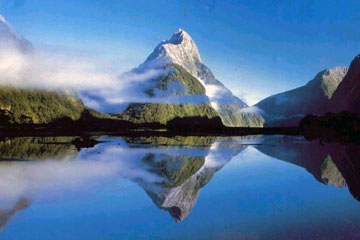
- Napa Lake
We will visit Dukezong Old Town, Sonzanlin Monastery, Napa Lake and the villages around. After that we will send you to the airport for the flight to Kunming. We will meet you at the Kunming airport, transfer you to the hotel and check you in.
Dukezong Old Town: This is a 1300-year-old Tibetan town located in Shangri-La, which has experienced both the flames of war and prosperity of frontier trade. Dukezong Old Town's authentic Tibetan dwellings, majestic prayer halls and pagodas, winding lanes offer sanctuary to all those seeking refuge from the bustle city. The old Tibetan way of life, as well as dwellings, are well-preserved in here. Tibetan chess is played in local households as it has been for the past 1,000 years, and horse bells still tinkle along the ancient caravan path. Bonfires that are lit in the town square every night illuminate local musicians as they sing to and play traditional stringed instruments.
Songzanlin Tibetan Monastery: Being the largest Tibetan Buddhist monastery in Yunnan, Songzanlin Monastery, also known as Guihua Monastery, is one of the most famous monasteries in the Kang region. The monastery is located near Shangri-La County, at the foot of Foping Mountain. Construction of the monastery began in 1679 and was completed two years later. The monastery seems like a group of ancient castles and is composed of two lamaseries, Zhacang and Jikang.
Napa Lake: Napa Hai ("Lake behind the forest") Nature Reserve is a state-designated wetlands area situated some 8 kilometers north of Shangri-La County (aka Zhongdian County) on the Yunnan-Guizou Plateau in northwestern Yunnan Province. Not surprisingly, this wetlands area is a true paradise for all types of birds, most especially for water fowl. In spring, the higher, drier parts of the reserve is a prairie landscape carpeted with flowers. Parts of this prairie are farmed, the main crop being highland barley.
Day 15
Kunming-
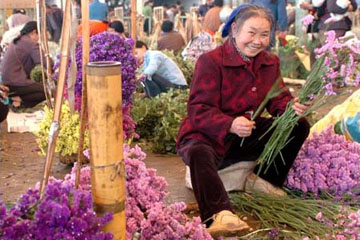
- Bird-Flower Market
After breakfast we will visit Stone Forest, Bird-Flower Market, Green Lake.
Stone Forest: Stone Forest is in Lunan Yi Nationality Autonomous County, which is about 120 kilometers (75 miles) from Kunming and requires only a three-hour drive. It covers an area of 400 square kilometers (96,000 acres) and includes both large and small stone forests, as well as many other scenic spots. An old local saying says that 'If you have visited Kunming without seeing the Stone Forest, you have wasted your time.' Truly, the site is one of the most important attractions of Yunnan. Walking through the site, visitors marvel at the natural stone masterpieces and are bewitched by the intricate formations.
Bird-Flower Market: The Bird-Flower Market is located in the center of Kunming’s downtown area, and is a bazaar focusing on flowers and pets such as gold fish, birds, and many other commodities for sale. The market retains the feel of a traditional Chinese market in every sense. In addition, you will find there is a wide array of knick-knacks, souvenirs, replica weapons, fish, turtles, rodents, and many other items on sale.
Green Lake Park: The Green Lake Park was established in the 17th century on the west side of the Wuhua Mountain and is sometimes described as a "Jade in Kunming". The park consists of a group of 4 small sub-lakes linked by bridges in the traditional style. Brightly painted pavilions on the islands inside the park, tree-lined walks, flowers, and the local populace enjoying themselves by exercising in various specialist groups all add to the appeal of the park. Green Lake is ringed by a street, and along the edge of that are restaurants and tea houses, shops, and hotels.There are performances of pieces from Chinese operas and of folk music within and around the park.
Day 16
Kunming-
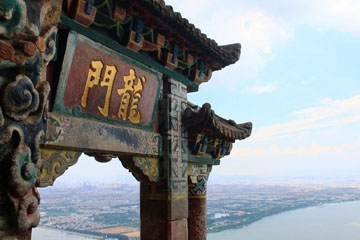
- Bamboo Temple
In the morning we will visit Xishan Dragon Gate, Qiongzhu Monastery, and after that we will send you to the airport to take the flight home.
Xishan Dragon Gate: The most spectacular landscape in Xishan (Western Hill) Forest Park is the "Dragon Gate”, which was built in the Qing Dynasty on top of Xishan, large-scale and very magnificent. Standing on the summit of Dragon Gate, one can enjoy the scenic beauty of the Dianchi Lake. On the gate are these words: Travel to Kunming but the Dragon Gate, likes you travel to Hangzhou but the West Lake.
Qiongzhu Temple, or Bamboo Temple is a Buddhist temple situated on Yu'an Mountain to the northwest of Kunming, Yunnan. The name of the temple (Qiongzhu) refers to a type of bamboo (genus Qiongzhuea). The Bamboo Temple was established during in the Yuan Dynasty as the first temple dedicated to Zen Buddhism in Yunnan. It has since been burned down and reconstructed several times. The present structure mostly dates from the late Qing Dynasty.
| Travel in party of |
Superior Class ★★★★★ |
Deluxe Class ★★★★ |
Tourist Class ★★★ |
| 2-5 persons | $ | $ | $ |
| 6-9 persons | $ | $ | $ |
| 10 persons & above | $ | $ | $ |
| Single room Supplement | $ | $ | $ |
Service included:
√ Breakfast in the hotel
√ Personal Guide & Driver + Private car / van for Private Transfers & sightseeing
√ Hotels (twin share bases) as listed in the itinerary .
√ Domestic flights or trains as listed in the itinerary
Train (soft sleeper): Turpan to Dunhuang
Flights with tax:: Urumqi to Kashgar return, Jiayuguan to Lanzhou, Lanzhou to Kunming, Kunming to Lijiang
Zhongdian to Kunming
√ Service Charge & Government Taxes .
√ Luggage Transfers between airports and hotels
√ Government letter for visa support
Service excluded:
* Personal expenses. such as laudentry and tips to the guide and driver
* other activities such as boating, camel riding ect

